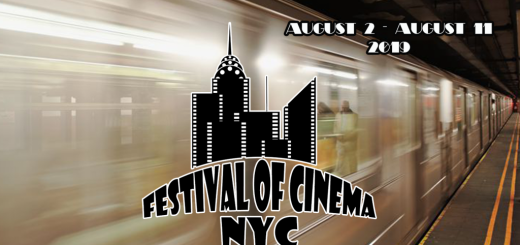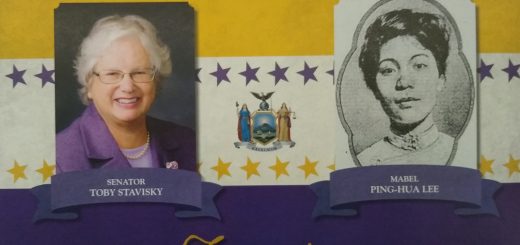A Look into The Lives of The Faces Behind Forest Hills Stadium
Views: 1543
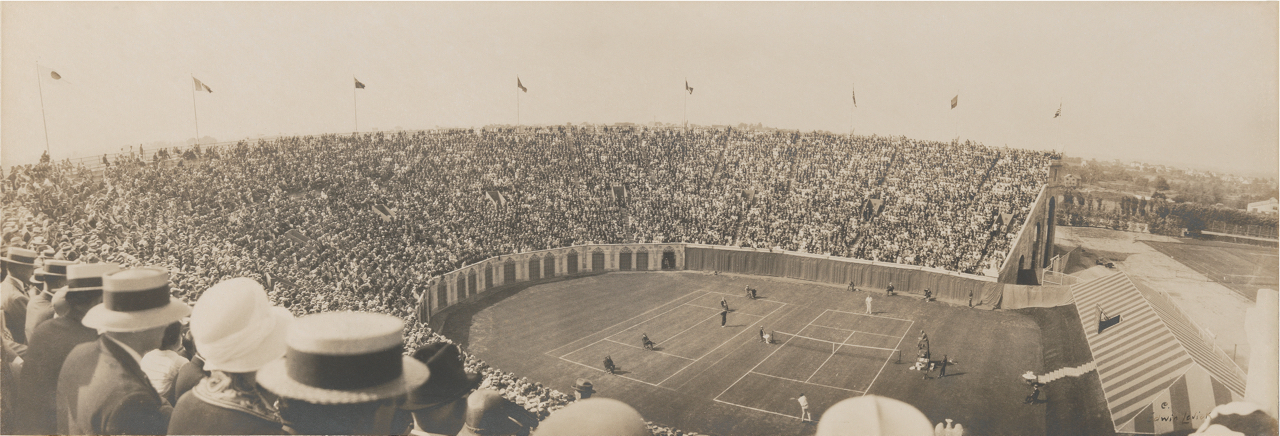
By Michael Perlman
Behind the eagle-adorned façade of Forest Hills Stadium, with its grand arched colonnade, is a destination which harbors historic firsts, consisting of achievements in tennis, music, architecture, culture, and cinema. Now it is time to rediscover and commemorate the parties responsible for the development of America’s first tennis stadium in 1923.
Prolific in their field, they consisted of West Side Tennis Club member Kenneth MacKenzie Murchison (1872 – 1938), a foremost public buildings architect, as well as civil engineer Charles Scott Landers (1880 – 1946) and The Foundation Company, builders of superstructures and substructures. At the time, Landers was a past Club president.
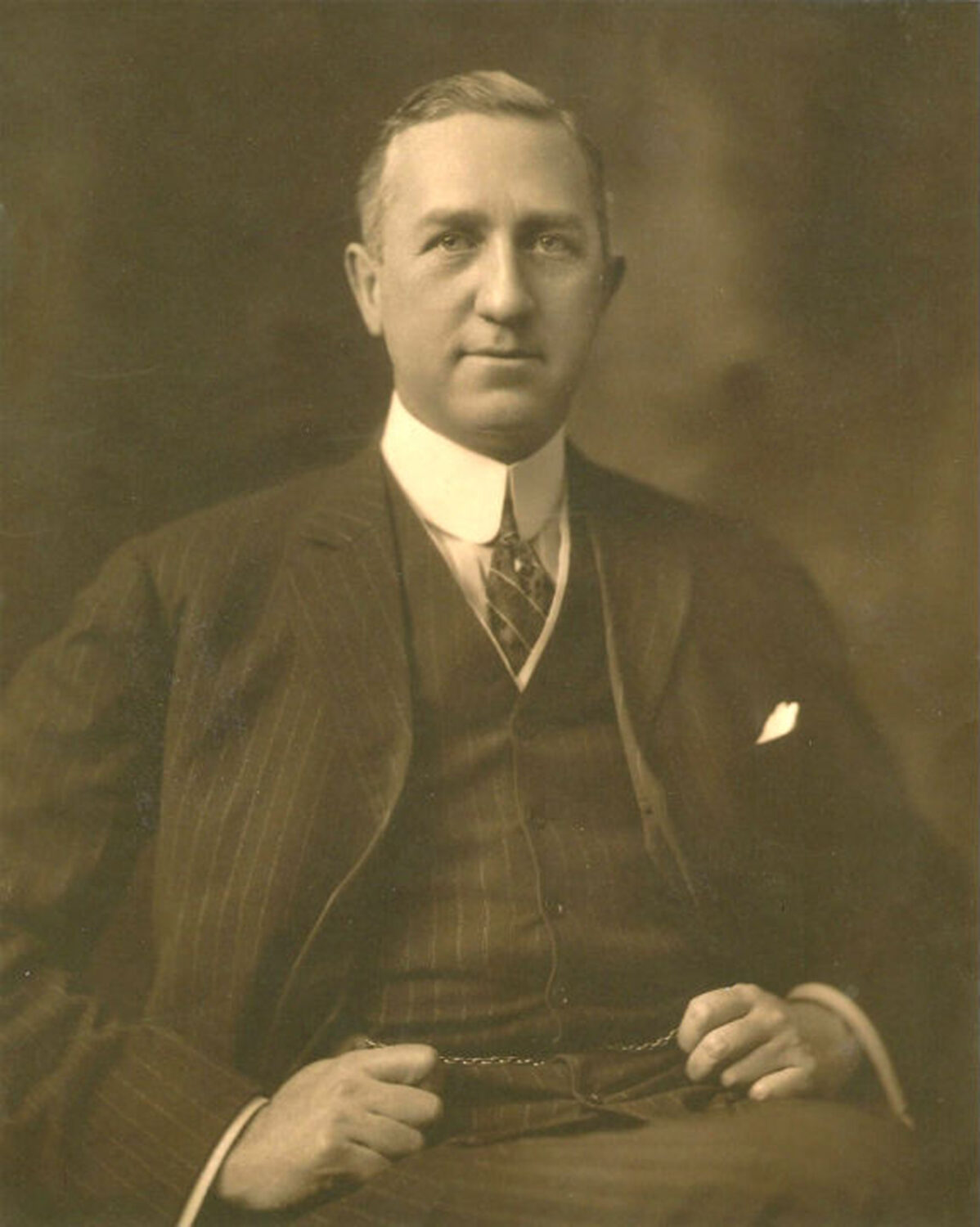
The WSTC, which originated in 1892 on Manhattan’s west side, placed Forest Hills on the map. After various relocations, the nearly $30,000 Tudor-style Clubhouse, designed by Grosvenor Atterbury and John Almy Tompkins, was completed in 1913 and would feature temporary grandstands for matches.
In November 1917, Murchison was part of the Club’s nominating committee. Within 10 years of the Club’s success in Forest Hills, the temporary grandstands were deemed inadequate. The Club and the U.S. Lawn Tennis Association partnered to finance the 14,000-seat Forest Hills Stadium, an over $150,000 project. Construction began in April 1923 and was completed in anticipation of the Davis Cup in August, where an American victory took center court. To help finance its development, The New York Times reported on May 22, 1923 that 900 out of 1,500 choicest seats have already been taken under a 10-year subscription plan for $100, where the subscriber would have their name affixed to a metal plate, guaranteeing their seat for major events. On August 11, 1923, a dedication and opening ceremony of Forest Hills Stadium marked a crowning achievement.
An advertisement in the November 1922 edition of Massachusetts Institute of Technology’s “The Technology Review” featured an aerial rendering of Forest Hills Stadium. It read, “AMERICA’S Tennis Stadium, now under construction at Forest Hills, Long Island, is to be ready for the Women’s Nationals on August 13th and for the Davis Cup Challenge Round on August 31st. The West Side Tennis Club sought a general contractor whose record and facilities guarantee trustworthy workmanship and speed of construction without sacrifice of economy. THE FOUNDATION COMPANY was chosen to do the job.”

The firm also achieved foremost projects in destinations including Paris, Rio De Janeiro, London, Montreal, Chicago, San Francisco, Los Angeles, Pittsburgh, Atlanta, Mexico City, as well as Lima, Peru and Cartagena, Colombia and Louvain, Belgium.
A May 1924 ad in The Wisconsin Engineer featured a success story with an aerial photo showing matches in progress. It read, “The Foundation Company is an organization of construction engineers specializing in the building of difficult superstructures and substructures. The world-wide reputation gained in its early history for trustworthy underground construction has followed it into the field of general engineering contracting. Among the structures completed by The Foundation Company are buildings of every known type.” That includes bridges and bridge piers, river and harbor developments, industrial plants, warehouses, hydro-electric developments, office buildings, highways, mine shafts and tunnels, and railroads and terminals.
Considering the firm’s title, a century later, Forest Hills Stadium is indeed rock solid, bearing influence on a local to an international level. On a pillar lies an authentic “West Side Tennis Club Stadium” plaque from 1923, bearing names of the architect, builders, engineer, Stadium Committee, and Board of Governors.
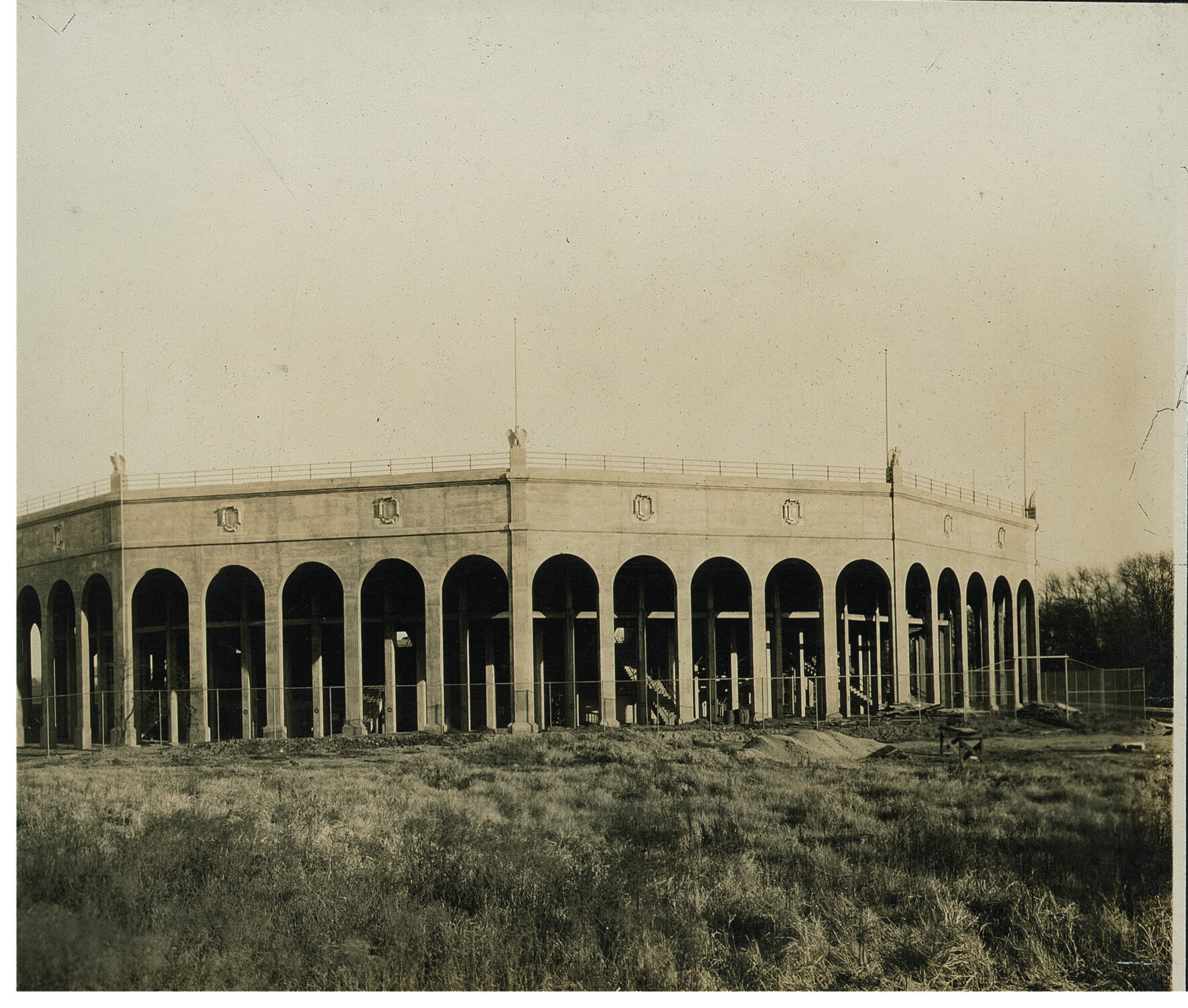
A September 1923 edition of “Concrete” referenced a further demand for permanent seating arrangements for a major summer spot. It referenced the Stadium as “the only structure of its kind in America and second in the world,” the other being constructed (in 1922) for Wimbledon. The work entailed 5,000 bbls of cement, 2,700 cubic yards of gravel, 1,500 cubic yards of sand and 175 tons of reinforcing steel.
Today, Murchison’s descendants live in Rhode Island, New York California, Oregon, Washington, D.C., and London. Lynne De Wardener-Burris is Murchison’s great-granddaughter, a Long Island resident. Murchison’s grandson is Hays Browning of Washington, D.C., who visited the Stadium at age 11.
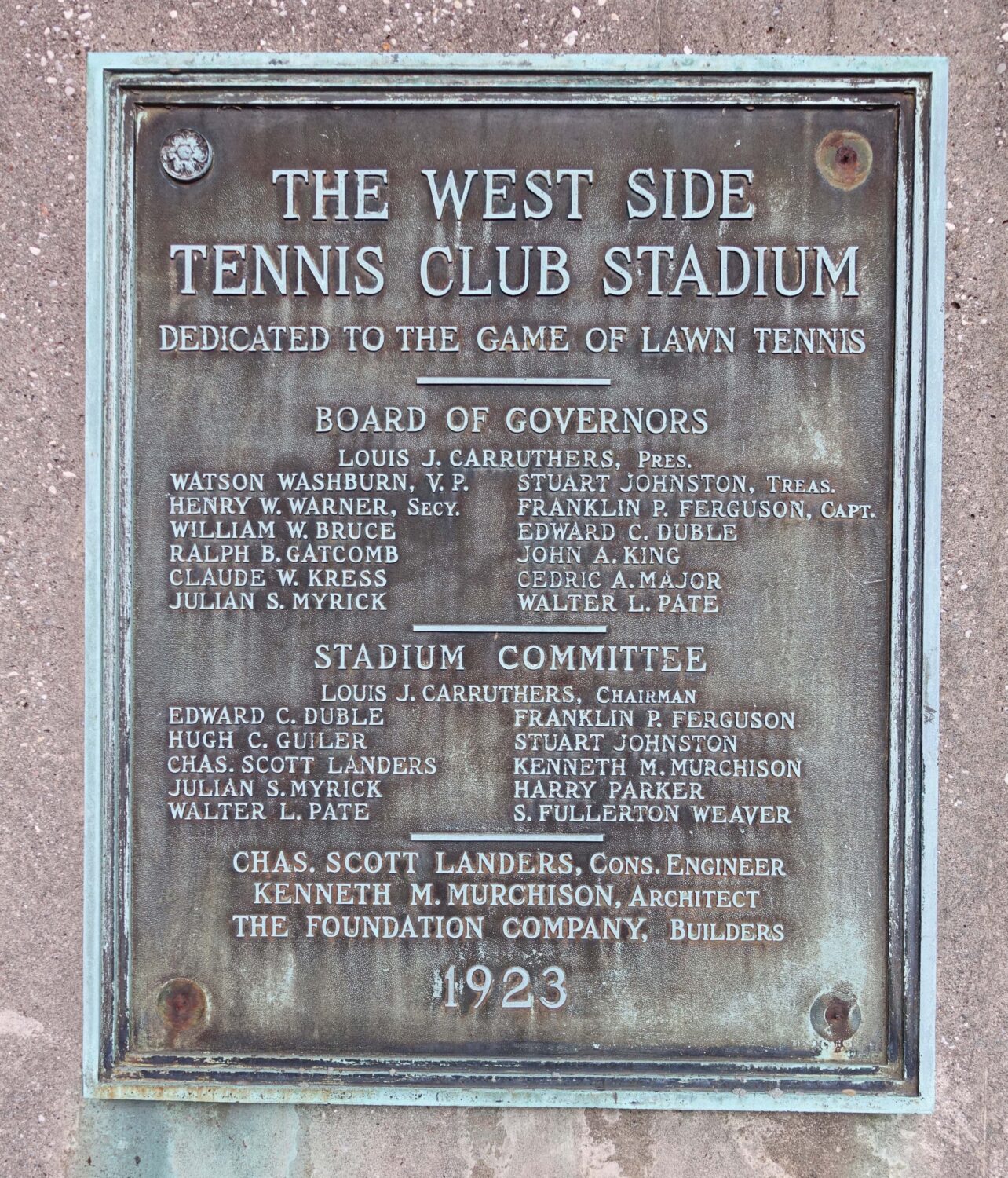
Pati de Wardener of Rhode Island is the wife of Murchison’s grandson, Max de Wardener. “At first glance, Forest Hills Stadium reminded me of a modern Colosseum, which was quite beautiful, even in its neglected state,” she said, referencing its abandonment prior to its August 2013 reopening as a concert venue at large.
De Wardener feels grateful to witness the Stadium during its centennial and said, “I am glad to have lived to see the Stadium saved.” When asked what words of support she would like to extend to the community, the WSTC, and the Forest Hills Stadium team at this time, she replied, “As an avid tennis player and musician, Kenneth Murchison would give you all a ‘Ta fur saving whit’s dear tae mah hert’ with all the ‘Scots’ in his heart!” If Murchison was alive during the centennial, she feels he would be “gobsmacked to experience the fact his stadium is still here.” “He probably could not wait to delve into some of the things technology is producing this century,” she continued.
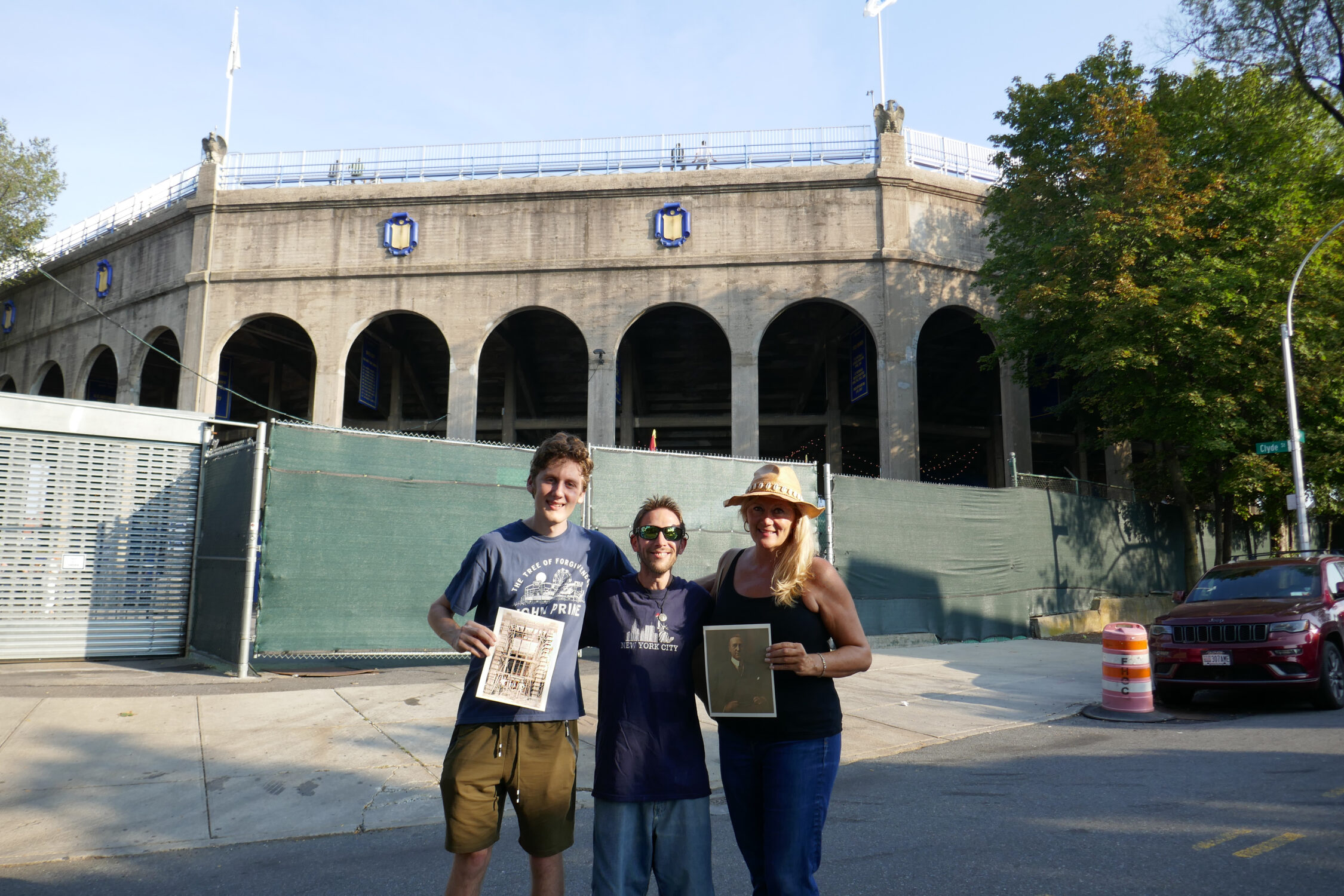
While researching the de Wardener family, she developed a fascination for Murchison, who she considers a multi-talented visionary. She explained, “Architect, musician, and songwriter are among the many gifts he was given. He was most famous for his Beaux Arts flavor, and it was reflected in his designs of his many railroad stations, including the railway station in Havana, Cuba that remains in use. In addition, he was responsible for homes, hotels, banks, apartment buildings, and of course your beautiful stadium. He was an amazing man.”
Based on her studies about his life, she considers him as someone who was intensely curious and intelligent, and loved music and acting. “I believe he appreciated learning anything and everything, about anything and everything,” said de Wardener. She also feels inspired by his sense of humor. “He loved pirates and indulged the young folks with plays and stories about them at the family’s Orton Plantation in Wilmington, North Carolina. The Plantation was sold out of the family several years ago,” she continued.
Murchison studied at Columbia University and Paris’ Ecole des Beaux Arts. That was where he befriended John Russell Pope, who designed Washington, D.C.’s Jefferson Memorial, National Gallery of Art, and the National Archives. Murchison worked with Realtor Douglas Elliman to design New York City’s first cooperative apartments at 39 East 79th Street for friends including Mrs. James Roosevelt and Emily Post. His other New York residential projects are his family’s residence at 49 East 63rd Street, where Maxfield Parrish once painted, and his residence at The Beaux Arts Apartments at 307 and 310 East 44th Street, regarded as a major Art Deco work. His patriotic contribution can be found at Staten Island’s U.S. Marine Hospital.
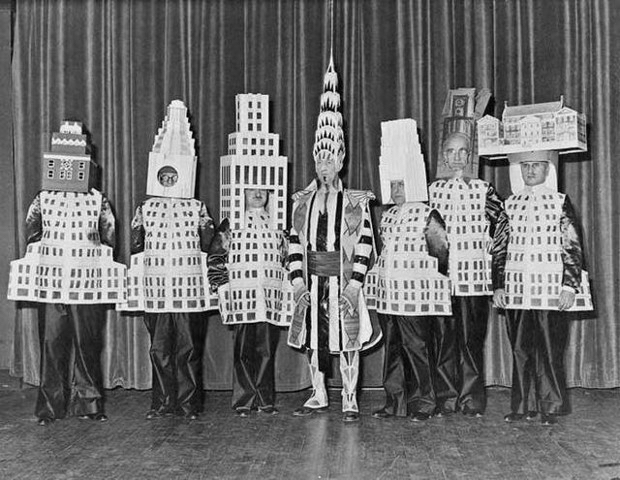
Some of his great public works were Baltimore’s Pennsylvania Station, Jacksonville’s New Union Station, Buffalo’s Lehigh Valley and Lackawanna terminals in Buffalo, Havana’s Terminal Station, Hoboken’s Delaware-Lackawanna Station, and Jamaica’s Long Island Railroad Station.
On a more personal scale, he founded and designed the Dunes Club in Narragansett Pier, Rhode Island, where his family summered, and he also designed the once affluent Sands Point Bath and Tennis Club of Long Island. North Carolina’s famed Orton Plantation was the Murchison family’s winter retreat, and examples of his work were additions to the Manor House, as well as Luola’s Chapel, designed in his sister’s memory. It remained in their family until recently. Also in North Carolina, his name is memorialized in Wilmington’s Neo-Classical Revival Murchison National Bank Building.
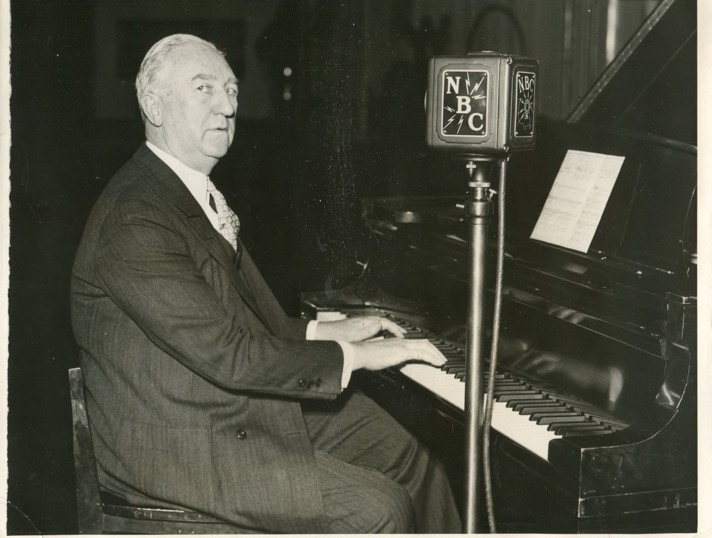
Murchison also designed the $300,000 (former) Forest Hills Theatre at 107-16 Continental Avenue, which opened on December 5, 1922 and was referenced as “the finest moving picture house on Long Island. It was also advertised as the most complete of its kind and size countrywide. Its Tudor façade offers lions, heraldic shields, fruits, knights, vines, urns, and tilework. The theater featured a rare four-manual Smith Unit Organ, occasionally embellished by singers and dancers for a silent film prelude.
Besides architecture, Murchison furthered his artistic talents and was an individual of high society. He founded the Beaux Arts Balls at Hotel Astor in Times Square, which benefitted architects during The Great Depression. He played 14 instruments and was exceptional on piano, and he conducted New York’s Mendelssohn Glee Club. In Bryant Park, he stood in the footsteps of George Washington, dressing in his attire for the pageant commemorating the 143rd anniversary of Washington’s inauguration. He bore a striking resemblance.
“If I would think like Kenneth Murchison, I think I would say to the up and coming, ‘Take the future by the hand and make it a wonderful place, with a tempering word from Hippocrates… and ‘do no harm,’” said de Wardener.
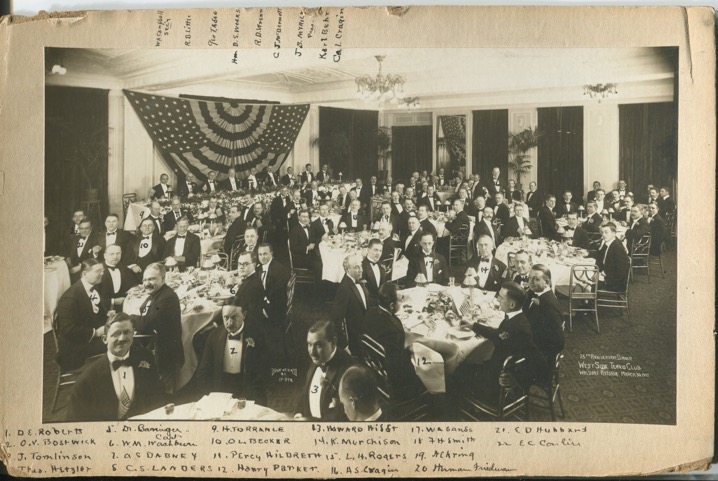
Forest Hills Stadium engineer Charles Landers worked closely with Murchison, also designing the Stadium. He resided in a pre-war apartment house at 50 East 72nd Street. In the early 1920s, he was president of the Metropolitan Lawn Tennis Association. He specialized in foundations, underpinnings, and substructures, including tunnels. He was a graduate civil engineer of Sheffield Scientific School of Yale University and a member of the American Society of Civil Engineers.
In a public testimony with the Court of Appeals, Landers stated, “My first experience was in railroad construction not only in this country, but in South America. Upon returning to the States, I was an instructor in engineering in the Sheffield Scientific School. Following that, I came to New York and was an engineer with the Pennsylvania Railroad Company, on the construction of the Pennsylvania Station and the East River tunnels. They were pneumatic tunnels. Also, the tunnels across New York City under 32nd and 33rd Street. After that, I was with the Foundation Company of New York who made a specialty of difficult and unusual foundations, generally by the pneumatic method, in lower Manhattan.”
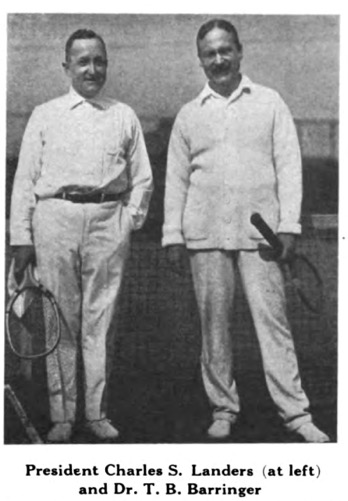
With the Foundation Company, Landers was associated with the construction of the Royal Insurance Building on Maiden Lane, 37 Wall Street, U.S. Realty Buildings at 111 and 115 Broadway, and the Singer Tower from 1906 to 1907, which was when foundations for the Hudson & Manhattan Building were underway. He also worked on the Catskill Aqueduct and the Woolworth Building’s foundations under architect Cass Gilbert. He is also associated with the Equitable Building at 120 Broadway in 1912 to 1913, as well as J.P. Morgan Company and Seamen’s Church Institute.


